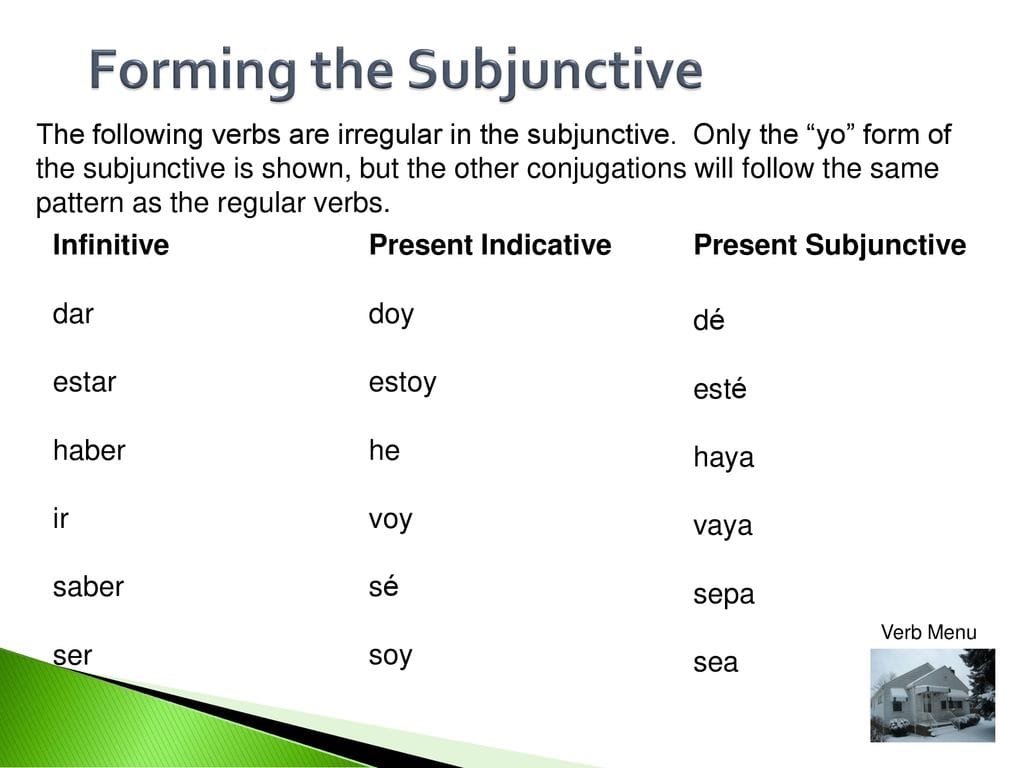Hey there, language enthusiasts! Prepare to unlock the subtle power and emotional resonance of the subjunctive mood with saber—a verb that goes beyond simply “knowing” to express the shades of doubt, desire, and possibility that color our thoughts. This guide, inspired by the nuanced approach of Dr. Lía Zorita, will equip you with the knowledge and practical tools to wield the saber subjunctive like a true Spanish conversationalist.
Unveiling the Saber Subjunctive
The subjunctive mood in Spanish adds a layer of subjectivity to your verbs, hinting at uncertainty, wishes, or possibilities. With saber, meaning “to know,” the subjunctive becomes essential when expressing doubt about whether someone knows something, or when conveying a hope or desire related to knowledge. It’s the difference between stating a fact (“He knows the answer”) and expressing a nuanced thought (“I wonder if he knows the answer”).
Conjugating the Saber Subjunctive: Embracing the Irregular
Saber, like many powerful verbs, has its own quirks. Its subjunctive conjugations deviate from the regular -er verb patterns, particularly in the present tense, where the stem transforms into sep-. This seemingly small shift unlocks a world of expressive potential. Let’s explore the present subjunctive:
| Pronoun | Present Subjunctive |
|---|---|
| yo | sepa |
| tú | sepas |
| él/ella/usted | sepa |
| nosotros | sepamos |
| vosotros | sepáis |
| ellos/ellas/ustedes | sepan |
The imperfect subjunctive offers two forms, each suggesting a slightly different shade of meaning within the past tense:
| Pronoun | Imperfect Subjunctive (-ra) | Imperfect Subjunctive (-se) |
|---|---|---|
| yo | supiera | supiese |
| tú | supieras | supieses |
| él/ella/usted | supiera | supiese |
| nosotros | supiéramos | supiésemos |
| vosotros | supierais | supieseis |
| ellos/ellas/ustedes | supieran | supiesen |
While a future subjunctive technically exists, it’s less frequently used in modern Spanish. You’ll likely encounter the present subjunctive with a time indicator instead. For example, “Dudo que sepa la respuesta mañana” (I doubt he will know the answer tomorrow) is more common than using the future subjunctive form. Language is a living entity, constantly evolving!
Mastering the Saber Subjunctive: Context is Key
The saber subjunctive isn’t used randomly. Specific contexts call for its nuanced touch:
Expressing Doubt or Uncertainty: “Dudo que sepa la verdad” (I doubt he/she knows the truth). The subjunctive sepa subtly conveys the speaker’s uncertainty.
Sharing Wishes or Desires: “Espero que sepas cuánto te aprecio” (I hope you know how much I appreciate you). The subjunctive infuses the expression with warmth and sincerity.
Following Specific Conjunctions: Conjunctions like que, si, ojalá, and others often create an environment of subjectivity, triggering the use of the subjunctive. They often introduce clauses expressing doubt, desire, or other subjective feelings, making the subjunctive a natural fit.
Common Pitfalls and How to Avoid Them
Even experienced Spanish speakers can occasionally stumble with the saber subjunctive. Here’s how to navigate the trickiest terrain:
Saber vs. Conocer: Avoid confusing saber (to know a fact or skill) with conocer (to be familiar with a person or place). Reír conjugation can also be tricky! Each has its own distinct subjunctive rules.
Remembering the sep- Stem: This irregular stem is the cornerstone of the saber subjunctive in the present tense.
Knowing When Not to Use the Subjunctive: The indicative mood is perfectly appropriate when expressing certainty with saber. For instance, “Sé que tienes razón” (I know you’re right) is a statement of fact. Perhaps your knowledge of French will help you see the parallel with reussir conjugation.
Expanding Your Subjunctive Horizons
The saber subjunctive is just one piece of the larger subjunctive puzzle. Consider exploring the subjunctive forms of other verbs like darse or ir to deepen your understanding and expressive capabilities. Resources on darse subjunctive and other subjunctive forms can provide valuable insights.
Nuances and Ongoing Research
The Spanish language is rich with nuances, and the subjunctive is no exception. Some experts suggest that the -se form of the imperfect subjunctive is becoming less common in modern spoken Spanish. Additionally, ongoing discussions explore the subtle differences between saber and conocer, which can sometimes overlap in meaning. These ongoing explorations highlight the dynamic nature of language.
By mastering the saber subjunctive, you’re not just learning a grammatical rule; you’re gaining access to a deeper level of expression in Spanish. You’re learning to convey the subtleties of thought and emotion with grace and precision. Embrace the challenge, and your Spanish will flourish.
- Star Ring Trends: Etsy vs Amazon - March 28, 2025
- Boost Pollinator Habitats: Baby Blue Eyes Sustainable Farming Guide - March 28, 2025
- Protect Big Black Bears: Effective Conservation Strategies - March 28, 2025
















